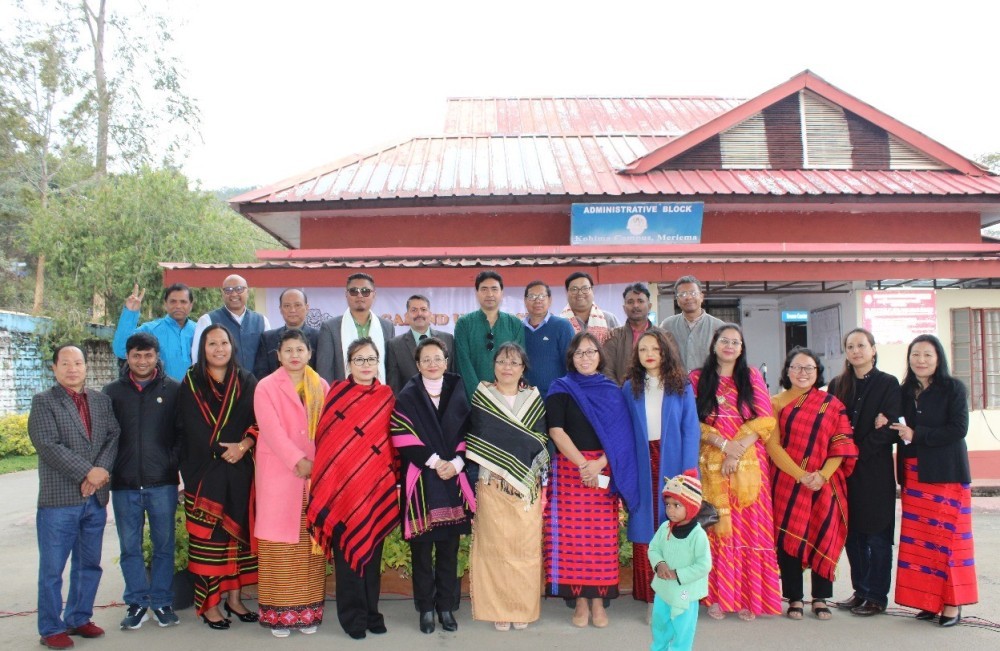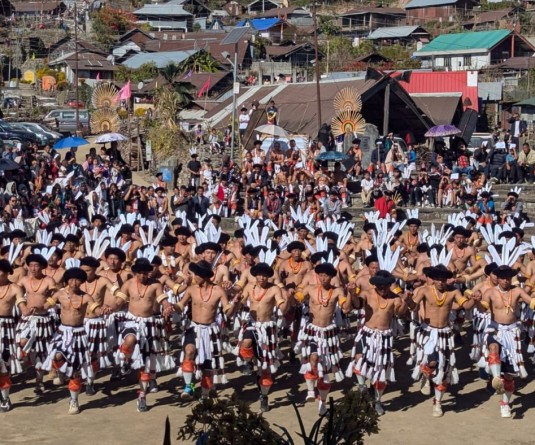Bharatiya Bhasha Utsav was celebrated at NU, Kohima on December 11.

KOHIMA, DECEMBER 11 (MExN): Nagaland University, Kohima Campus, celebrated the Bharatiya Bhasha Utsav on December 11, showcasing India's rich linguistic and cultural diversity. Organised under the guidance of the Ministry of Education, the festival highlighted the importance of regional languages in fostering national unity and preserving cultural heritage.
Speaking at the event, Prof. G.T. Thong, Pro Vice-Chancellor of Nagaland University, Kohima Campus, noted that institutions across the country were marking this occasion in alignment with the National Education Policy (NEP) 2020. He emphasised that the festival featured activities such as storytelling, skits, and plays that celebrated India's linguistic richness. "This festival reminds us of the immense cultural wealth our country possesses. Each language reflects our shared heritage, and it is our duty to preserve and promote this diversity for future generations," he said.
Prof. Jano, Dean of the School of Humanities and Education, underscored the role of Indian languages in strengthening social harmony and the significance of multilingual education. She remarked that such celebrations promote perfection in one’s mother tongue while fostering an appreciation for India’s linguistic diversity. "This occasion enhances the spirit of unity in diversity, allowing languages to coexist creatively and thrive in an enjoyable way," she added.
Nagaland University’s diverse campus community, representing languages from Indo-Aryan, Dravidian, Tibeto-Burman, Austro-Asiatic, and even isolated families like Japanese, provided a unique backdrop for the event.
Prof. Pangersenla Walling, in her concluding remarks for the first session, described Bharatiya Bhasha Utsav as more than a celebration—it is a movement to honour linguistic plurality, empower native languages, and bridge cultural gaps. Dr. Anuj Kumar, Assistant Professor, Department of Hindi, highlighted the importance of multilingualism and cultural diversity, emphasising that such events sensitise students to India's linguistic richness while promoting unity and harmony.
The second session, hosted by Asebu Kekhriesenuo Kesiezie, featured engaging performances, including Manipuri and Rajasthani dances, Chokri and Tenyidie folk songs, and poetry recitations in Ao, Lotha, Telugu, Japanese, Dogri, Bangla, and Odia. Traditional attires and their significance were also showcased by various linguistic communities.
The festival concluded with a cultural parade, where students, faculty, and staff donned traditional attire representing India's regions, symbolising unity in diversity. The event also featured a display of regional cuisines, further celebrating India’s cultural wealth.





